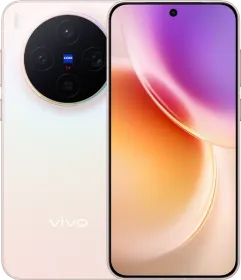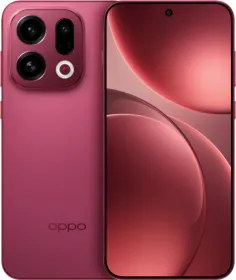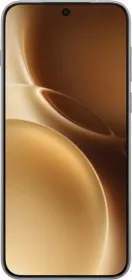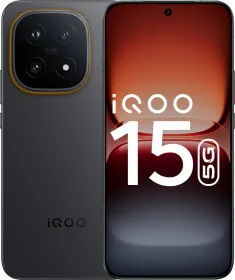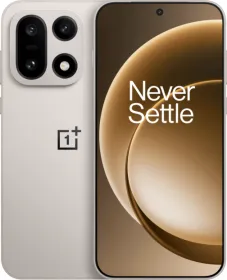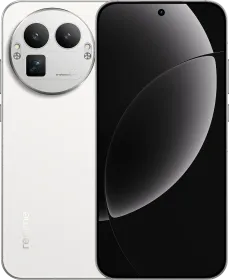vivo X300 vs Xiaomi 17 vs iPhone 17: Table of Content
The 2025 flagship season is in full swing, with companies like Apple, Xiaomi, and vivo each launching their latest handsets, which will remain on the market for the better part of 2026. We’re talking about the vivo X300, the Xiaomi 17, and the iPhone 17 (review): all three models are their brand’s best, representing three different ideologies in making flagship smartphones.
If you’re torn between these premium contenders, here’s a deep dive into what makes each one stand out, and which might be the better fit for your needs.
Also Read: vivo X300 vs. vivo X200: What’s Changed? Everything.
vivo X300 vs. Xiaomi 17 vs. iPhone 17: Design



| vivo X300 | Xiaomi 17 | iPhone 17 | |
| Dimensions | 150.6 x 71.9 x 8 mm ( | 151.1 x 71.8 x 8.1 mm | 149.6 x 71.5 x 8 mm |
| Weight | 190 g | 191 g | 177 g |
| Material | glass / aluminum / glass | Dragon Crystal Glass / aluminum | Ceramic Shield 2 / aluminum frame / glass |
| IP Rating | IP68/IP69 (1.5m for 30 min) | IP68 (1.5m for 30 min) | IP68 (6m for 30 min) |
| Colors | Black, Blue, Red, Purple, Pink | Black, Blue, Pink, White | Black, White, Mist Blue, Sage, Lavender |
While the vivo X300 and the Xiaomi 17 feature a punch-hole screen, the iPhone 17 includes a pill-shaped Dynamic Island on the front. However, all the phones have symmetrical bezels on all sides.
On the back, the vivo X300 features a gigantic circular module situated at the top (in the center). The Xiaomi 17 features a square-shaped camera module at the top left of the back panel, which includes three camera sensors and the flash module. The iPhone 17, unlike both phones, has a vertical dual-camera.
vivo X300 vs. Xiaomi 17 vs. iPhone 17: Display



| vivo X300 | Xiaomi 17 | iPhone 17 | |
| Display | 6.31-inch | 6.3-inch | 6.3-inch |
| Technology | LTPO OLED | LTPO OLED | Super Retina XDR OLED LTPO |
| Refresh Rate | 1-120Hz | 1-120Hz | 1-120Hz |
| Peak Brightness | 4,500 nits | 3,500 nits | 3,000 nits |
- Among the three phones, the vivo X300 has the brightest screen, followed by the Xiaomi 17 and the iPhone 17. While the vivo X300 and the Xiaomi 17 support 2160Hz PWM dimming, making their displays easier on the eyes, the iPhone 17 still sticks with 480Hz PWM dimming.
Among the standard display features are an LTPO AMOLED screen that supports a variable refresh rate (1-120Hz).
Also Read: Xiaomi 17 Pro Max vs. iPhone 17 Pro Max: Battle of the Ultimate Flagships in 2025
vivo X300 vs. Xiaomi 17 vs. iPhone 17: Processor & Operating System
| vivo X300 | Xiaomi 17 | iPhone 17 | |
| Chipset | Dimensity 9500 | Snapdragon 8 Elite Gen 5 | Apple A19 |
| Fabrication Technology | TSMC N3P | TSMC N3P | TSMC N3P |
As of now, all chip manufacturers, including MediaTek, Qualcomm, and Apple, have transitioned to using TSMC’s N3P technology, which is more powerful and efficient than the N3E technology used in the previous flagship chipset generation.
vivo X300

Under the hood, the vivo X300 runs on the Dimensity 9500 SoC, which offers up to 32% and 17% faster single-core and multi-core performance compared to the Dimensity 9400. The octa-core CPU includes one 4.21 GHz prime core, three 3.5 GHz performance cores, and four 2.7 GHz efficient cores.
Besides, it also features the Arm Immortalis-G1 Ultra MC12 GPU and the NPU 900. The chipset is paired with up to 16GB of LPDDR5X RAM and up to 1TB of UFS 4.0 storage. Moreover, the handset features a powerful CPU and GPU combination, which can handle virtually everything you throw at it.
Out of the box, the vivo X300 runs on OriginOS 6 (based on Android 16), which offers new features like a design inspired by Liquid Glass, animation updates in the form of elastic motion effects, a lock screen with dynamic clock and photo placement, a gradual blur system, and AI-powered predictive type.
Xiaomi 17

The Xiaomi 17, even the baseline variant, features the Snapdragon 8 Elite Gen 5 SoC, which comprises an octa-core CPU with two prime cores (4.6 GHz) and six performance cores (3.62 GHz), the Adreno 840 GPU with hardware-accelerated raytracing, and the Hexagon NPU.
Xiaomi has equipped its latest flagship with up to 16GB of RAM and 1TB of UFS 4.1 storage. This particular chipset also features enough single and multi-core processing power to benchmark neck-to-neck with the Dimensity 9500 on the vivo X300. Even otherwise, day-to-day performance shouldn’t be an issue.
Xiaomi’s latest flagship runs on HyperOS 3 (based on Android 16), which, like OriginOS 6, also takes heavy inspiration from Apple’s Liquid Glass design language (including the dynamic lock screen and the redesigned icons). However, the phone also includes a Hyper Island dynamic notification hub and the Xiaomi HyperAI system.
Also Read: realme GT 8 Pro vs. OnePlus 15 vs. iQOO 15: Camera Comparison
iPhone 17

The baseline iPhone 17 features the A19 chip, a hexa-core chipset that comprises two performance cores (4.26 GHz), four efficiency cores (2.6 GHz), a five-core GPU, and a 16-core Neural Engine. Apple equips the iPhone 17 with 8GB of RAM and up to 512GB of NVMe storage.
In my review of the iPhone 17, the handset scored 3,617 and 9,263 points in the single/multi-core GeekBench 6 CPU test, which is slightly lower than the scores of the other two chipsets. However, the chipset runs behind two exceptionally powerful processors, which makes it the second-best.
The iPhone 17, unlike the other phones, actually features iOS 26 operating system with the Liquid Glass design interface with enhanced depth effects, rounder buttons and menu bars, and sleeker animations. It also features a couple of Apple Intelligence features, like Live Translation, along with improvements to Visual Intelligence and Genmoji & Image Playground.
| GeekBench 6 CPU Test | Dimensity 9500 | Snapdragon 8 Elite Gen 5 | Apple A19 |
| Single-Core Score | 4,007 | 3,834 | 3,617 |
| Multi-Core Score | 11,217 | 11,525 | 9,263 |
vivo X300 vs. Xiaomi 17 vs. iPhone 17: Cameras
| vivo X300 | Xiaomi 17 | iPhone 17 | |
| Primary Camera | 200MP (f/1.7, 1/1.4″, OIS) | 50MP (f/1.7, 1/1.31″, OIS) | 48MP (f/1.6, 1/1.56″, sensor-shift OIS) |
| Max Video Resolution & Frame Rate | 4K@120fps | 8K@30fps | 4K@60fps |
| Zoom Camera | 50MP (f/2.6, 1/1.95″, OIS) 3x optical zoom | 50MP (f/2.0, 1/2.76″, OIS) for 2.6x optical zoom (10cm – ∞) | N.A. |
| Ultrawide Camera | 50MP (f/2.0, 1/2.76″, 119˚) with AF | 50MP (f/2.4, 1/2.76″, 120˚ without PDAF | 48MP (f/2.2, 1/2.55″, 120˚) with PDAF |
| Front Camera | 50MP (f/2.0) AF | 50MP (f/2.2) PDAF | 18MP (f/1.9) Center Stage with PDAF |
| Max Video Resolution & Frame Rate | 4K@60fps | 4K@60fps | 4K@60fps |
vivo X300

The vivo X300 stands out with its Zeiss collaboration. It features T-coated lenses and a dedicated V3+ imaging chip that excels at computational photography features, such as bokeh effect, low-light rendition, and true-color capture.
With its 200MP primary camera, the vivo X300 is expected to capture the most detailed pictures of all three phones. While the phone can record 4K videos at 120 fps, allowing buyers to capture super-detailed slow-motion videos, it also supports the Vivo Zeiss 2.35x teleconverter, which helps capture distant subjects without compromising image quality.
Also Read: iPhone 17 Pro vs. vivo X300 Pro vs. OPPO Find X9 Pro: Leaks Reveal the Ultimate Camera Showdown
Xiaomi 17

Xiaomi 17’s camera system has been developed in collaboration with Leica Summilux optics, which adds professional-quality color grading and cinematic HDR control to the smartphone. The handset can record 10-bit LOG video and Dolby Vision HDR formats. Further, it is the only smartphone in this comparison that supports native 8K video recording at 30 fps.
Both the Xiaomi 17 and the vivo X300 have a higher-resolution front-facing camera than the iPhone 17.
iPhone 17

The Apple iPhone 17 features a dual 48MP camera system, but it remains the only phone in the segment that doesn’t have a dedicated zoom camera (even the Pixel 10 has upped its game in that regard). There’s a new Dual Capture feature that has been available on Android phones for a while, and the maximum video resolution isn’t as high (nor is the frame rate).
What’s great, or rather groundbreaking, is the 18MP Center Stage front camera that lets you capture selfies in multiple perspectives. The feature functions by cropping in on different portions of the square-shaped camera sensor (4:3, 3:4, 16:9, 9:16, and 1:1), making enough space for a group of eight to 10 people without requiring them to take a step forward.
vivo X300 vs. Xiaomi 17 vs. iPhone 17: Battery Life & Charging Speed

| vivo X300 | Xiaomi 17 | iPhone 17 | |
| Battery Capacity | 6,040 mAh Si/C | 7,000 mAh Si/C | 3,692 mAh |
| Wired Charging Speed | 90W | 100W | up to 40W |
| Wireless Charging Speed | 40W | 50W | 25W MagSafe |
Among the three phones, it is the Xiaomi 17 that has the largest physical battery, and in theory, it should last the longest as well. It also supports the fastest rate of wired and wireless charging, so the battery should charge quickly. It also includes magnetic wireless charging.
Next up is the vivo X300, which features a 6.040 mAh physical battery, which should also last over a day of moderate usage (slightly less than the one on the Xiaomi 17). The phone doesn’t support magnetic wireless charging.
However, thanks to its advanced Adaptive Power mode, my iPhone 17 offers around eight to 10 hours of screen-on time (sometimes even more) upon consuming 100% of its battery. The iPhone also supports the slowest wired and wireless charging of all the phones, but it benefits from MagSafe charging, which has an entire ecosystem of accessories built around it.
Also Read: Galaxy S25 FE vs. Galaxy S24 (Snapdragon 8 Gen 3): Which One Should You Purchase?
vivo X300 vs. Xiaomi 17 vs. iPhone 17: Connectivity Options
| vivo X300 | Xiaomi 17 | iPhone 17 | |
| Supported 5G Networks | Sub-6 GHz | Sub-6 GHz | Sub-6 GHz, mmWave (in United States) |
| Wi-Fi | Wi-Fi 7 | Wi-Fi 7 | Wi-Fi 7 |
| Bluetooth | Bluetooth v5.4 | Bluetooth v5.4 | Bluetooth v6.0 |
| GPS | GPS (L1 + L5) | GPS (L1 + L5) | GPS (L1 + L5) |
| NFC | Yes | Yes | Yes |
| IR Blaster | Yes | Yes | No |
| USB | USB Type-C 3.2 | USB Type-C 3.2 | USB Type-C 2.0 |
vivo X300 vs. Xiaomi 17 vs. iPhone 17: Price & Verdict
vivo X300 Price

- vivo X300 (12GB/256GB): CNY 4,399 | Rs. 54,990 converted
- vivo X300 (12GB/512GB): CNY 4,999 | Rs. 62,138 converted
- vivo X300 (16GB/1TB): CNY 5,799 | Rs. 72,083 converted
If you’re priority is excellent imaging and excellent performance, the vivo X300 could be the right pick for you. The 200MP Zeiss camera and the V3+ imaging chip deliver exceptional clarity and natural colors in pictures, while the Dimensity 9500 ensures effortless multitasking and gaming. Other pros include an LTPO OLED screen with the highest brightness and the latest OriginOS user interface based on Android 16.
Xiaomi 17 Price

- Xiaomi 17 (12GB + 256GB): CNY 4,499
- Xiaomi 17 (12GB + 512GB): CNY 4,799
- Xiaomi 17 (16GB + 512GB): CNY 4,999
Xiaomi rides its latest flagship on the Snapdragon 8 Elite Gen 5 SoC, which delivers blazing-fast speeds for both everyday workflows and intensive tasks, along with a Leica Summilux triple-camera setup that supports 8K video recording. Further, it is the mainstream flagship to feature a 7,000 mAh battery, which should translate into an excellent battery life. Furthermore, the phone is based on HyperOS 3, featuring enhanced AI-based features.
iPhone 17 Price

The iPhone 17 doesn’t excel in raw specifications related to the display, cameras, or battery, but it certainly offers an integrated and well-put-together experience. The A19 chip is powerful (but slightly behind the Android flagships), and then there’s iOS 26 with the Glass display that has started a trend in the smartphone industry. The 18MP Center Stage selfie camera is a standout feature, if you’re looking for any. Finally, the handset offers 256GB of storage, a much-needed upgrade.

You can follow Smartprix on Twitter, Facebook, Instagram, and Google News. Visit smartprix.com for the latest tech and auto news, reviews, and guides.















